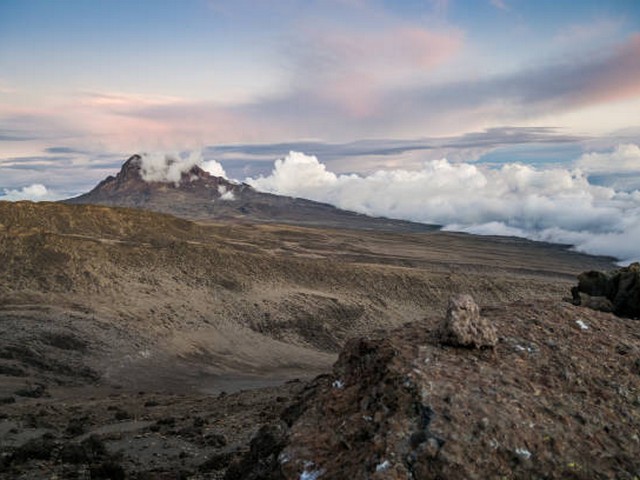Kilimanjaro Trekking With Medical Conditions: What You Need To Know
Embarking on an adventure to climb Mount Kilimanjaro is a dream for many. It’s not just a physical journey but a spiritual awakening, standing atop Africa, feeling the clouds beneath your feet, and witnessing the world from the roof of the continent. However, if you are someone dealing with a medical condition, such an adventure might seem daunting or out of reach. At the Kilimanjaro Centre for Trekking and Ecotourism (KCTE), we believe that Kilimanjaro is accessible to many, including those with health concerns, with the right preparation and support. This guide is designed to help you understand what you need to know about trekking Kilimanjaro with a medical condition, ensuring a safe and fulfilling journey to the summit.
Understanding Kilimanjaro’s Challenge
Climbing Kilimanjaro is no small feat. It involves trekking at high altitudes, enduring cold temperatures, and traversing diverse terrains. The mountain stands tall at 5,895 meters (19,341 feet), and the journey to its peak is both exhilarating and exhausting. Preparing for this climb requires physical and mental readiness, especially for those with existing medical conditions.
Pre-Trek Preparation
Consult Your Doctor
Before considering a trek, it’s crucial to have a thorough consultation with your healthcare provider. Discuss your specific condition and the demands of high-altitude trekking. Certain conditions such as heart problems, respiratory issues, or diabetes need careful management and approval from a medical professional.
Choose the Right Route
At KCTE, we offer several routes to the summit, each varying in length, difficulty, and scenic beauty. For trekkers with medical conditions, choosing a longer route can often be beneficial. Routes like the Lemosho or the Northern Circuit offer a slower ascent, allowing more time for acclimatization and a higher success rate.
Fitness and Conditioning
Physical preparation is key to a successful trek. Tailor your training to improve cardiovascular health, muscle strength, and endurance. Focus on low-impact exercises if your condition limits more intense activity. Our team at KCTE can provide personalized training advice tailored to your medical needs.
On the Mountain: Safety and Health Management
Acclimatization and Altitude Sickness
One of the biggest challenges on Kilimanjaro is the altitude. Altitude sickness is a real concern and can affect anyone, regardless of their medical history. Symptoms include headache, nausea, and dizziness. Our guides are trained to assist with acclimatization processes and to monitor trekkers for any signs of altitude sickness, ensuring immediate response and care.
Medication and Equipment
Ensure you have an adequate supply of your medications, stored in different bags in case one gets lost. Discuss with our KCTE guides about the medical facilities available on the route. We recommend bringing a personal first-aid kit tailored to your medical condition, alongside the comprehensive kits carried by our guides.
Support and Expertise
Our guides and porters at KCTE are not only experts in navigating Kilimanjaro’s terrain but are also trained in emergency first aid and altitude sickness protocols. They are equipped to support trekkers with medical conditions and ensure their safety, providing a reassuring presence throughout the journey.
The Psychological Journey
Climbing Kilimanjaro is as much a psychological challenge as it is physical. Prepare mentally by setting realistic goals, focusing on the journey rather than just the summit. Stress management techniques such as meditation or mindful breathing can be very beneficial, especially when dealing with the anxiety that might come with trekking under medical constraints.
Travel Insurance
Ensure you have comprehensive travel insurance that covers high altitude trekking and any potential medical treatments you might need. Verify that your policy covers evacuation costs in case of serious health issues during the climb.
Why Choose KCTE for Your Kilimanjaro Adventure?
At the Kilimanjaro Centre for Trekking and Ecotourism, we specialize in creating inclusive, safe, and breathtaking climbing experiences. We understand the intricacies of managing medical conditions during such an ambitious trek and are committed to providing the highest level of care and support. Booking your Kilimanjaro climb with KCTE means choosing a partner who values your dreams and your well-being equally.
Frequently Asked Questions
Q: Can people with heart conditions climb Kilimanjaro?
A: Yes, people with heart conditions can climb Kilimanjaro, but it is crucial to get clearance from your healthcare provider and to climb with an experienced operator who understands your needs.
Q: What is the best time of year to climb Kilimanjaro for someone with a medical condition?
A: The best times are during the dry seasons, from January to mid-March and from June to October, as clearer paths and better weather conditions provide a safer environment for those with health concerns.
Q: How does KCTE handle emergency situations on the mountain?
A: KCTE’s guides are trained in emergency response and have protocols in place for rapid descent and evacuation if necessary. We maintain communication systems to reach medical facilities quickly in case of severe health issues.
Embark on Your Journey with Confidence
Climbing Kilimanjaro is an extraordinary endeavor, and having a medical condition doesn’t necessarily exclude you from this life-changing experience. With careful planning, the right support, and a determined spirit, reaching the roof of Africa is within your grasp. Contact Kilimanjaro Centre for Trekking and Ecotourism (KCTE) today to start planning your safe and spectacular Kilimanjaro adventure. Dream big, prepare well, and let KCTE help you reach your summit!




